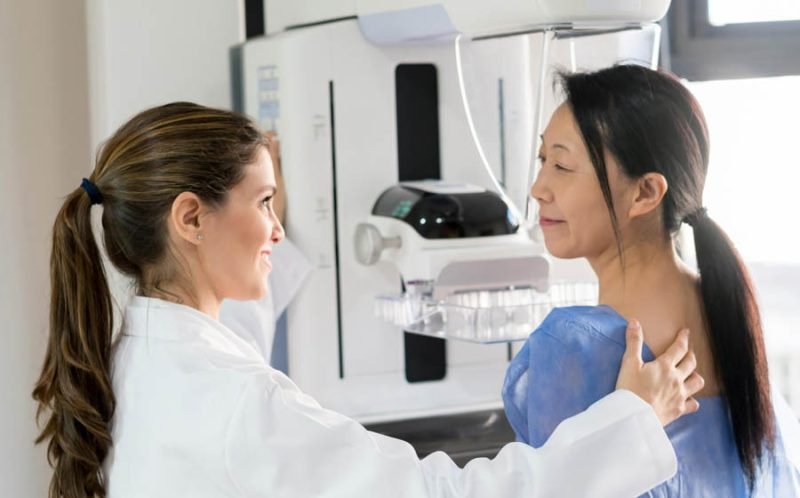
On that note, when should you get screened? What does the procedure involve? How often should you get screened? For answers, please read on.
Prevention is always better than cure, and in the case of breast cancer, it’s particularly true. The professionals at Access Vascular Health understand the value of education and guidance in promoting women’s health. They also believe that screening-age patients should get a mammogram to ensure early detection of breast cancer and other health issues.
Recommended Age for Screening
The United States Preventive Services Task Force (USPSTF) promotes patient care by providing evidence-based recommendations for the early detection of diseases and prevention. In this regard, the organization recommends that women between 50 and 74 get mammograms every other year. And if you fall in the 40 to 49-year age group, consider discussing with your physician if and when you should get one.
Likewise, The American Cancer Society (ACS) recommends that women aged 45 to 54 get screening mammograms annually, while those aged 40-44 may start annual screenings at the discretion of their healthcare provider. Also, it’s advisable to continue screening, as advised, for the remainder of your life.
The recommendations above apply to women at average risk for cancer. This implies the following:
- You don’t have a personal or family history of the disease.
- You haven’t undergone radiation therapy before you hit 30.
- Genetic mutations that could increase your risk are absent.
High-risk women shouldn’t wait until they hit the suggested ages. They should start earlier and get screened more frequently to lower their risk of developing the disease. I know what’s on your mind, “how do I know if I’m at a high risk of breast cancer?”
Your physician can help you identify and assess factors that could place you at high risk. Some of the factors they look out for include the following:
- Family history of breast cancer – there’s a one in five chance of developing the disease if your mother, brother, sister, or daughter had breast cancer.
- Having other ailments such as Cowden syndrome or Li-Fraumeni syndrome. If your close family member has either of these conditions, your likelihood of getting breast cancer increases.
- Exposure to hormones for prolonged periods- taking estrogen and progesterone – could raise your risk.
- Having certain gene mutations such as BRCA1 and BRCA2.
Why Is Screening Invaluable?
Mammograms are a routine part of preventative care for women. This screening test helps diagnose breast cancer early when it’s most treatable. Early detection also increases your chance of survival and decreases the need for aggressive treatments.
Instead of relying on physical exams and self-exams to detect cancer, mammograms help detect abnormalities that may be too small for you to feel – which can be signs of cancer or other conditions. Hence, it makes sense to get mammograms as recommended.
What to Expect
A mammogram is an x-ray of the breast used to detect lumps or changes that may indicate breast cancer. Expect the procedure to take at most 20 minutes.
The radiologist compresses your breast in between two plates during the mammogram. This flattens the tissue, allowing for a better view of the breast, which aids in detecting irregularities. Even so, compression may cause temporary discomfort, but it’s important for an accurate picture.
Nonetheless, mammography is one part of an overall breast health plan which you should discuss with your physician. Other aspects include clinical exams and specific lifestyle changes for maintaining overall breast health.
Also, self-awareness is key. A self-exam can help you identify lumps or changes in your breast tissue – report such changes to your doctor for further diagnostic testing. Familiarity with your body can help you recognize changes easily and ensure better health outcomes.
How to Prepare
You need to take various precautions before the procedure. For instance, avoid taking ibuprofen, aspirin, or painkillers before the test, as they can cause bleeding and other issues.
Also, do not wear deodorant, talcum powder, or other lotions, as they may cause false images. Similarly, schedule the test when your breasts are least tender – usually a week after your menstrual cycle or when you’re not pregnant.
Take Action: Schedule Your Screening Session
Get the procedure done regularly, especially if you are in the suggested age groups. Also, talk to your healthcare provider and discuss concerns you may have. Your doctor’s office, healthcare facilities such as Access Vascular Health, or local radiology center can help you schedule a mammogram.
By getting a mammogram, you can take a vital step toward protecting your health. Don’t bide your time; take action now. It could save your life. And remember, early detection through regular screening is the key to preventing breast cancer.









